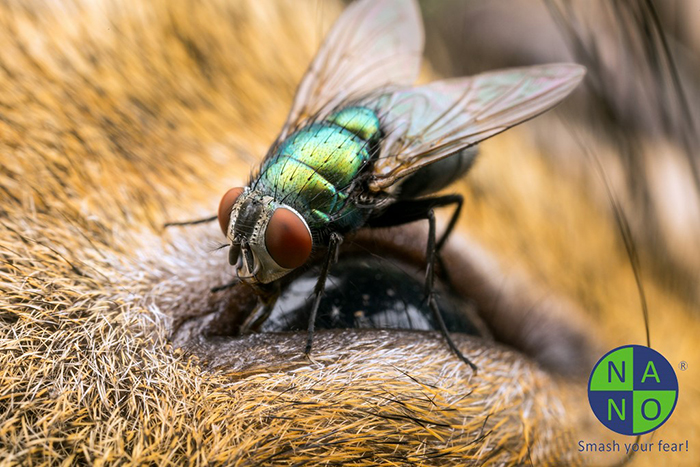Blow fly
FACTS, IDENTIFICATION & CONTROL
Latin name: Calliphoridae
OVERVIEW
Blow fly are a family of insects in order Diptera. There are about 1.100 kind of blow fly in the world distributing in India, Japan, China, America, North America. Their bodies are the same as mental with feathery hair on the antennal terminal segment of males. Adult blow flies have their mouth parts like sponges while mouth parts of Maggots are similar to hook.
ACTIVITIES, FOOD AND HABIT
Decaying meats are blow fly favorite food and they are the first organisms contact with death animals. The meat of death animals is essential condition for larval and pupal growth. In addition, they are attracted to plants which emit the smell of rotting meat and they can be a pollinator for those plants.

REPRODUCTION AND LIFE CYCLE
Females commonly lay their eggs on decaying meats. Depending on species, larvae will hatch within a few hours to a few days. Larvae have to pass through 3 stages in a few days. After that, they leave their food sources and become pupae in soil. They range from 9 – 22 mm, hook – like mouth parts and spiracles for breathing. Larvae are soft and pale in color which are the same as rice or worms. There is a median row of fleshy tubercles that resemble hair among each segment.
Generally, we usually see larvae beside dead animals. Blow fly eggs are laid in rotting meat where provide food sources for larval development before being pupae. After maturing, larva create skin which is known as puparia and look like droppings or cockroach cases. Pupae develop in puparia and become adult blow flies. Different blow flies have different uptimes. Calliphora vomitaria commonly attacks decaying dead animals in cool months. In contrast, Phaenicia sericata strongly works in hot season. Other blow flies develop well in dark areas and some of them need hot temperature for larval development.
BLOW FLY INFESTATION
The common sign is adult and larval blow flies. The adults usually rest on flat surfaces or fly around areas emitting smell of rotting meat of food. Larval can be seen easily when the crawl out of breeding material to pupate.


